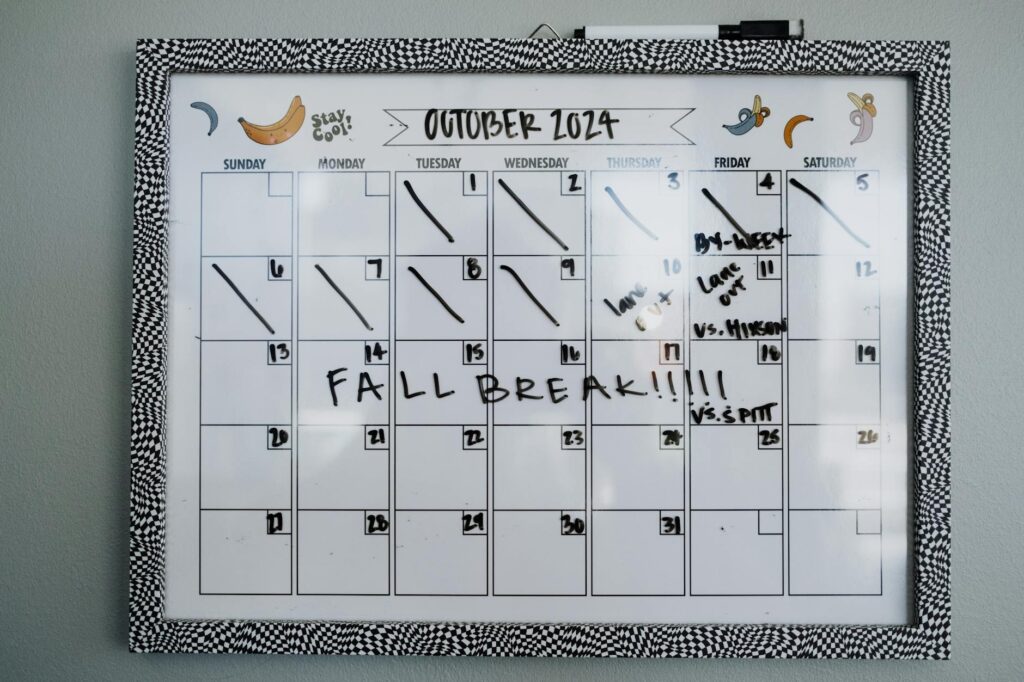What is break schedules?

What is break schedules?
Break schedules are an essential part of maintaining productivity and work-life balance in today’s fast-paced environment. With the increase in remote work and flexible hours, understanding how to effectively structure breaks can lead to improved mental health and overall well-being.
Understanding Break Schedules
To grasp the significance of break schedules, it’s crucial to first define them and explore their purpose in both workplace and educational settings.
What Are Break Schedules?
Break schedules outline structured times for individuals to step away from work or study tasks. They serve to provide a necessary pause, allowing time to recharge, refocus, and reduce the risk of burnout. Without these scheduled breaks, people often find themselves working longer hours without sufficient rest, which can lead to decreased productivity and heightened stress levels.
Types of Break Schedules
There are various types of break schedules, tailored to fit different environments. Here are a few common forms:
-
Fixed Breaks: These are predetermined times during a workday when employees are expected to take a break, such as a morning coffee break and a lunch break.
-
Flexible Breaks: Employees can choose when to take breaks throughout the day, allowing for adjustments based on workload and personal needs.
-
Micro-Breaks: Short breaks lasting just a few minutes, typically taken every hour or so to stretch, hydrate, or simply rest the mind.
-
Scheduled Study Breaks: In educational settings, students may follow a specific timetable that includes breaks during study sessions to enhance focus and retention.
The Benefits of Implementing Break Schedules
Incorporating break schedules into daily routines has numerous advantages that can significantly enhance both productivity and mental well-being.
Enhancing Focus and Productivity
Regular breaks are not just time away from work—they are a tool for enhancing focus. Studies have shown that taking short breaks can lead to increased concentration and creativity. When I allow myself a few minutes to step away from my desk, I often return with refreshed ideas and a clearer mind. This is particularly important in jobs that require sustained attention or creativity, as a simple change of scenery can spark new insights.
Reducing Stress and Preventing Burnout
Burnout is a real threat in today’s work environment. Break schedules can help alleviate the pressure that leads to stress. By taking time to step away and engage in activities that promote relaxation—such as meditation or even a quick walk—I’ve noticed significant improvements in my overall mood and ability to tackle challenging tasks. Regular breaks give my brain the downtime it needs to reset, reducing the risk of long-term mental fatigue.
Best Practices for Creating Effective Break Schedules
Creating effective break schedules requires some thoughtful planning. Here are actionable tips to get started:
Assess Your Workload and Goals
Before establishing a break schedule, it’s essential to evaluate your daily workload and set realistic break times. Understanding the tasks at hand and how long they take can help you determine when you’ll need a break most. For instance, if I’m working on a complex project, I find that taking a 10-minute break after every 50 minutes of focused work helps maintain my energy levels.
Incorporating Varied Activities During Breaks
Not all breaks are created equal. To maximize the benefits of your break time, consider incorporating varied activities. Here are a few ideas:
- Stretching: Helps relieve tension in your muscles and improves circulation.
- Hydration: Drinking water can refresh both the body and mind.
- Mindfulness practices: Taking a few moments to meditate or practice deep breathing can significantly boost mental clarity.
By varying activities, I keep my breaks engaging and beneficial rather than just a routine time away from my desk.
Conclusion: Making Break Schedules Work for You
Break schedules are more than just time away from work—they’re a strategic approach to enhancing productivity and well-being. By understanding what break schedules are, recognizing their benefits, and implementing best practices, I’ve found that I can work smarter, not harder.
Whether you’re working from home, in an office, or studying, integrating break schedules into your routine can lead to a healthier work-life balance. It’s time to embrace the power of breaks—your mind and body will thank you for it!
For more insights on workplace breaks and their legal implications, visit the U.S. Department of Labor page on breaks and meal periods.

Photo by Kelly